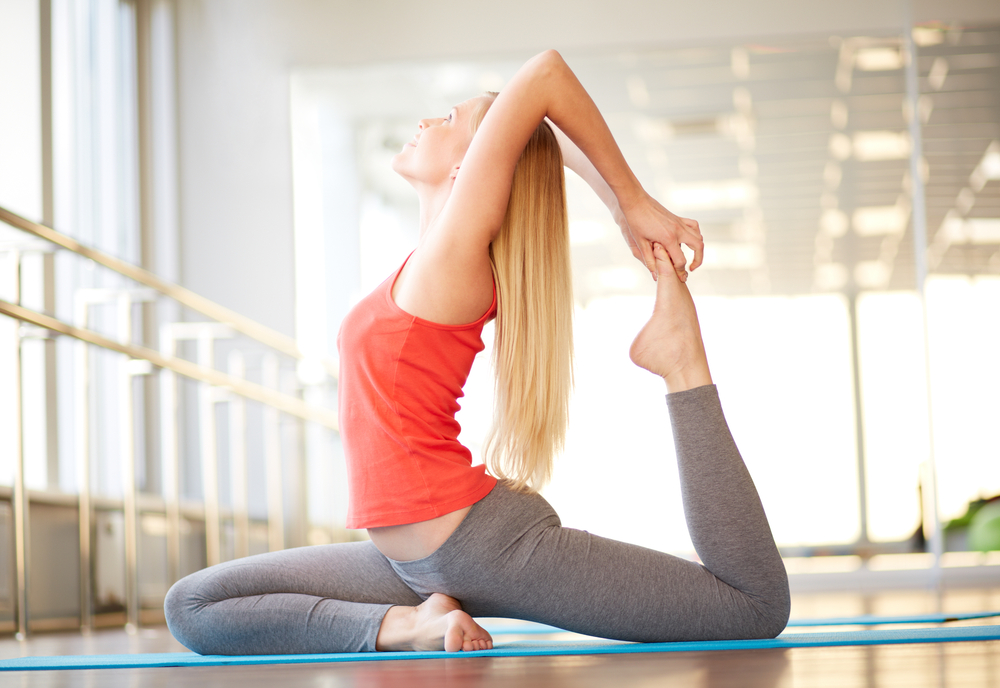
Flexibility Exercise: Everything You Need to Know

Flexibility exercises stretch your muscles and may improve your range of motion at your joints. There are two types of flexibility exercises: static stretching, in which you stretch a muscle without moving, and dynamic stretching, which combines stretching with movements.
Examples of static stretches include:
- Stretching the hamstring muscles by sitting on the ground with your legs straight, and leaning forward
- Stretching the calves by stepping forward with one leg, and shifting your weight toward the front leg
- Stretching your thigh muscle by bending one leg back toward your buttock, and holding on to your foot
Dynamic stretches are intended to get your muscles used to the types of movement you'll be doing during some other part of your workout, said Dr. Edward Laskowski, co-director of the Mayo Clinic Sports Medicine Center in Rochester, Minnesota. For example, if you plan to do an aerobic activity such as running, warm up with some dynamic stretches for your legs (see some examples below).
Also, you should start with a slowed-down version of a dynamic stretch, and then, as your muscles warm up, you can increase the speed of the movement. As with strength training, you may want to work with a personal trainer, or watch videos online, to learn the proper technique for dynamic stretches.
Examples of dynamic stretches include:
- High steps: Raise your knee toward your chest, hold on to your shin and then bring your leg back down. Then, do this with the opposite leg. You can do this while standing in one place or while walking.
- Ankle stretch: Raise one foot up slightly off the ground, keep your leg straight and flex your foot with your toes pointed up. Repeat with the opposite foot.
- Arm swings: Start with your arms straight out in front of you, with your palms facing down. Walk forward, and swing your arms together to the right so that your left arm goes across your chest. Then, swing your arms the opposite way as you keep walking, and repeat a few times.
- Arm circles: Hold your arms straight at your sides, parallel to the floor. Do arm circles in each direction, making bigger circles as you get more flexible.
Benefits of stretching include:
- Improved flexibility, which can be important for everyday activities
- Reduced risk of injury. If a muscle on one side of your body is tighter than a muscle on the other side, it creates an asymmetry that can increase the risk of injury, Laskowski said. Static stretches can help reduce this asymmetry, he said.
- Reduced lactic acid in the muscles. Lactic acid can create a burning sensation in the muscles during an intense workout.
How much flexibility exercise do you need to do?
You can make stretching part of every workout. Many experts advise doing dynamic stretching as part of a warm-up before a workout, and static stretching after a workout. For static stretching, you should hold each stretch for 10 to 30 seconds, according to the National Institutes of Health.
How can you avoid injury when stretching?
- Make sure you don't do static stretches when your muscles are "cold" (before you warm up), because this can lead to injury, said said Kelly Drew, an exercise physiologist with the American College of Sports Medicine.
- Don't bounce when you're doing static stretches, because this can cause tiny tears in the tissue, which can lead to decreased flexibility, Laskowski said.
- You should feel a mild pull in a muscle that you are stretching, but if you feel a sharp pain, you're overstretching.
Original article on Live Science.
Get the world’s most fascinating discoveries delivered straight to your inbox.

Rachael is a Live Science contributor, and was a former channel editor and senior writer for Live Science between 2010 and 2022. She has a master's degree in journalism from New York University's Science, Health and Environmental Reporting Program. She also holds a B.S. in molecular biology and an M.S. in biology from the University of California, San Diego. Her work has appeared in Scienceline, The Washington Post and Scientific American.
